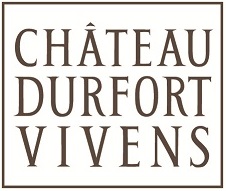Château Durfort-Vivens, `Les Plantes` de Durfort-Vivens Margaux


Vintage: 2019
| Vintage | Product Code | Format | Closure | Availability |
|---|---|---|---|---|
| 2019 | CM507B19 | 6 x 75 | Natural Cork | Available |
Producer
Château Durfort-Vivens is a second-growth, 55-hectare Margaux estate that owes part of its name to the Durfort de Duras, a powerful family in southwest France that came to Margaux in the 14th century. In 1824, Viscount Robert Labat de Vivens inherited the property, adding the name' Vivens'. Widely regarded as one of the finest estates in Margaux, it is currently owned and operated by Gonzague Lurton.
The estate’s vineyards are located in four villages within the Margaux appellation (Cantenac, Soussans, Margaux, and Arsac) and are planted with 90% Cabernet Sauvignon, 8% Merlot, and 2% Cabernet Franc on deep gravel soils. Gonzague converted 20% of the vineyards to biodynamic viticulture in 2009. Pleased with the results, he increased this to 40% the following year before embarking on full conversion in 2013. The vineyards of Château Durfort-Vivens have been fully certified both organic and biodynamic since the 2016 vintage.
Gonzague works with Technical Director Léopold Valentin and Cellar Master Jean-Jacques Hurteaud in the winery. Together, they have modernised the cellars, which now boast one of the largest amphorae collections in the world.
The Grand Vin, a blend of 90% Cabernet Sauvignon and 10% Merlot, is vinified in a combination of oak and concrete vats. It is then aged for 18 months in 60% new French oak barriques. The result is a benchmark Margaux: rich and powerful yet staggeringly elegant.
‘Les Plantes de Durfort-Vivens’ has replaced ‘Vivens’ as the château’s second wine. It is made from 88% Cabernet Sauvignon, 10% Merlot and 2% Cabernet Franc, sourced from younger vines within the estates and aged for 16 months in a combination of clay amphorae (80%) and French oak barrels (20%). The final wine is defined by its remarkable freshness and marries aromas of ripe black fruits with a subtle spiciness.
‘Le Plateau de Durfort-Vivens’ is a step up in intensity and is designed to represent power. It is made from 65% Cabernet and 35% Merlot sourced from 25-year-old vines, grown on deep sandy gravel soils and aged for 16 months in a combination of 66% in clay amphorae and 33% in French oak (10% new). As a result, the final wine is defined by its brooding black fruit character, complemented by excellent grip on the finish.
Finally, ‘Le Hameau de Durfort-Vivens’ embodies elegance. A blend of 53% Cabernet Sauvignon and 47% Merlot, aged in amphorae and oak barrels (with 15% new oak), it has a beautifully scented nose alongside bright notes of blackberry and crunchy plum fruit, velvety tannins and vibrant acidity on the palate.
Vineyards
Located in the communes of Margaux, Cantenac, Arsac and Soussans, the Durfort-Vivens vineyards are planted on hilltops which sit on deep gravels. The gravel was deposited by successive riverbeds of the Garonne in the Quaternary period. This magnificent terroir allows the grapes to reach full ripeness. All vineyard work is done by hand and pruning is adapted to the vigour of the vine, with the removal of excess buds, shoots and leaves to control yields. This brings richness, concentration and complexity to the wine. The Cabernet Sauvignon, Merlot and Cabernet Franc vines for the ‘Les Plantes’ are on average 15 years old and are certified both organic and biodynamic.
Vintage
The 2019 vintage in Bordeaux was notable for its changeable weather from budburst all the way through to the end of the harvest. Winter and spring were relatively mild, with budbreak occurring earlier than usual at the beginning of April. Heavy rains during June were followed by a period of drought that lasted up to mid-October, resulting in a reduction in yield of around 10%. 2019 will be remembered as a winemakers' vintage, where vigilance in the vineyards and on the sorting table was key to success.
Vinification
Upon arrival at the winery, the hand-harvested Cabernet Sauvignon, Merlot and Cabernet Franc grapes were destemmed and underwent a rigorous sorting by individual berry. Fermentation took place in temperature-controlled stainless-steel tanks with indigenous yeasts and minimum intervention. Following fermentation, the wine was aged for 16 months, 80% in clay amphorae, the remaining 20% in oak barrels.
Tasting Notes & Technical Details
Deep ruby in colour. On the nose, aromas of ripe black fruits are married with a subtle spiciness and chocolatey hints. Velvety tannins coat the palate and a bright acidity carries the complex flavours onto the lingering finish.
Alcohol (ABV)
13%
Acidity
5.6 g/l
Residual Sugar
0.2 g/l
pH
3.58
Other wines from this producer
Producer | Wine | Product Code | Features | Style | |
|---|---|---|---|---|---|
| Château Durfort-Vivens | `Vivens` Margaux | CM503 | R | ||
| Grand Vin, Margaux 2ème Grand Cru Classé | CM504 | R | |||
| `Le Plateau` de Durfort-Vivens Margaux | CM508 | R | Factsheet | ||
| `Le Hameau` de Durfort-Vivens Margaux | CM509 | R | Factsheet |